Pollinators like bees and beetles and butterflies are being threatened by habitat loss, pesticides and diseases like Colony Collapse Disorder. You can help them by planting pollinator-friendly plants in your yard. Here a a few of my favorite pollinator-magnets:
Allium ‘Millenium’
The first time I spotted Allium ‘Millenium’ (the plant was registered using that spelling) was during a July stroll through a botanical garden a couple years ago. I heard the constant hum of bees before I ever noticed any of the pretty purple flower globes.
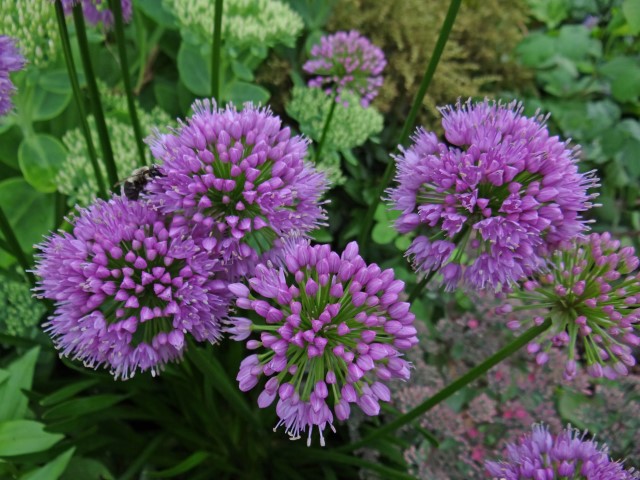
Allium ‘Millenium’ grows 15 to 20 inches tall with upright, sturdy stems. This flowering onion prefers full sun and well-drained soil. I don’t have any full sun in my yard, but the plants I purchased last spring had no problem thriving in a part-sun flowerbed. Bees and beetles covered the flowers the moment they started opening in late July.

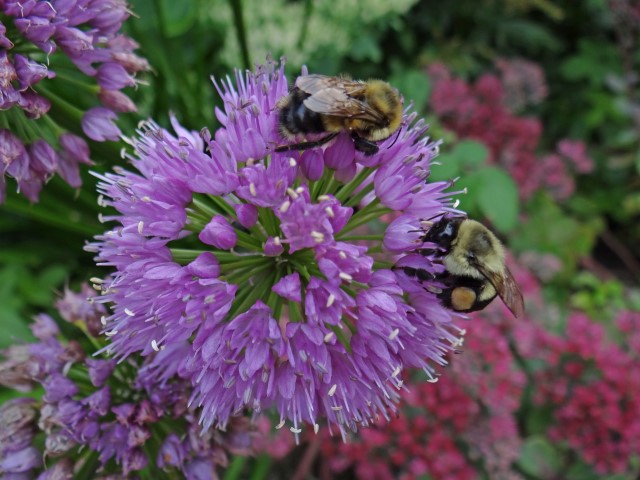
Goldenrod ‘Fireworks’ (Solidago rugosa)
Goldenrods are always a flurry of moths, beetles, bees, wasps and butterflies. There are many wonderful cultivars, but I like ‘Fireworks’ because it really does look like a golden-yellow fireworks display with those long, arching flower spires.

‘Fireworks’ grows 30-42 inches tall and prefers full sun and well-drained soil. The plants begin blooming in late summer, so they make an especially good pollen source for migrating butterflies. ‘Fireworks’ is hardy in Zones 3-9 and the plants are low maintenance and deer-resistant.
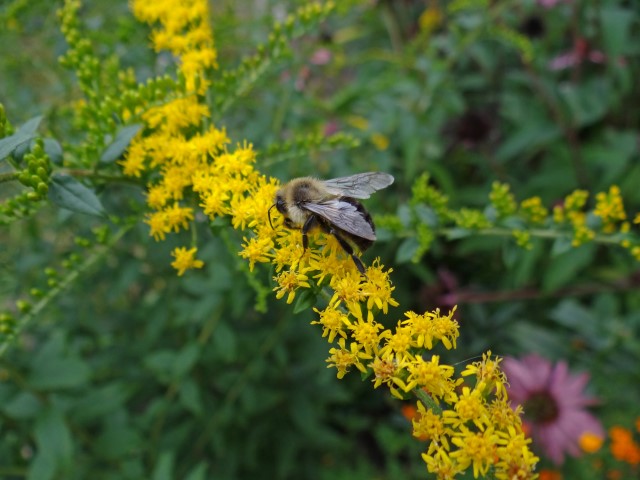
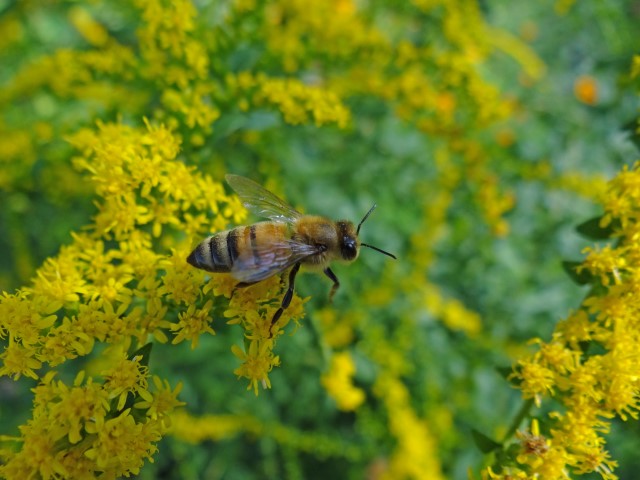
Anise Hyssop (Agastache foeniculum)
This herbaceous perennial is a member of the mint family. Anise hyssop grows 24-42 inches tall with pretty lavender flower spikes.
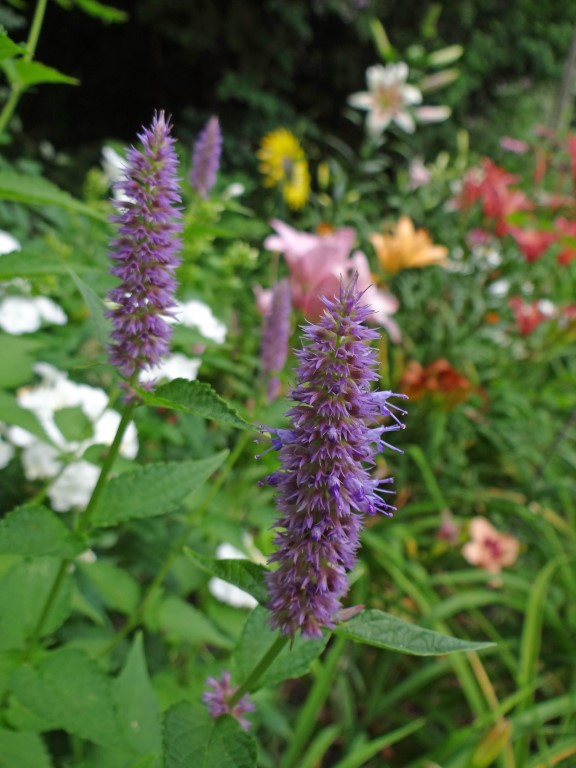
The name comes from the leaves which smell like licorice when you crush them, and they can be used in teas and desserts and as a salad garnish if you’re so inclined. The flowers are adored by bees as well as hummingbirds.
Anise hyssop used to be listed as a Zone 6-9 perennial, but more and more I’m seeing it listed as a Zone 4-9 or 5-9 plant. My plants usually survive winter in my Zone 5 garden, but if they don’t there are always new plants sprouting from seed in my flowerbeds each spring. It’s not a help-I’m-overwhelmed-by-morning-glory-seedlings intensity. The volunteers are easy to control, and they are handy to have around as emergency plants to tuck into bare areas.

Last summer I planted anise hyssop next to the sidewalk and several neighbors commented that they couldn’t believe how many bees those plants attracted. This is also the cheapest plant on this list. Unlike some perennials, anise hyssop can be easily sprouted from seed and the plants bloom the first year. In the past I’ve purchased seeds from Johnny’s (no affiliation).
Goldenrod ‘Wichita Mountains’ (Solidago)
I could’ve suggested some sedum or Joe Pye Weed cultivars to finish out this list, but I wanted to give another shout-out to a goldenrod. This one is a lesser-known variety called ‘Wichita Mountains,’ and I adore it.
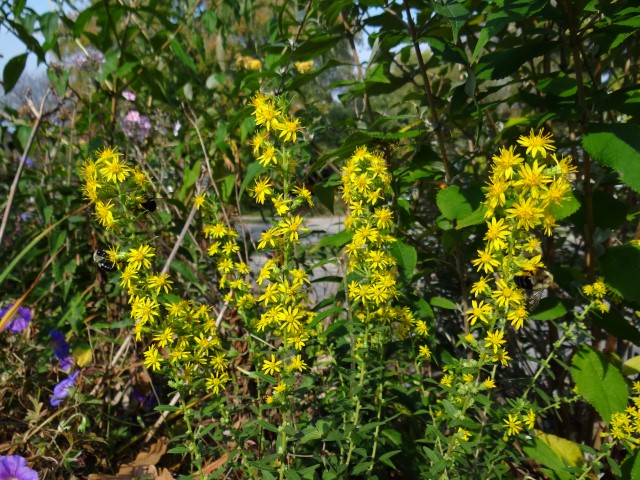
The flowers look like miniature dandelions and appear on upright stems that grow 24 to 36 inches tall. This plant is always the last perennial to bloom in my yard before the killing frost. The flowers appear in September into October. The bees and late-migrating butterflies flock to the nectar source at a time of year when blooming-plant options are becoming limited.
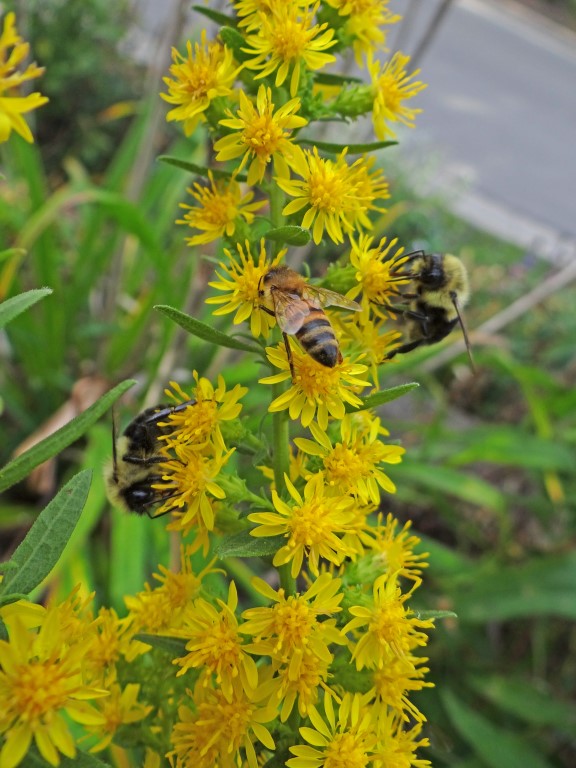
Last fall I discovered that ‘Wichita Mountains’ also has a delectable, sweet scent. I’m thinking of tucking a couple of plants next to my screen porch so I can watch the bees and butterflies and enjoy that heavenly fragrance in the fall.
If you live near southern Wisconsin you can find ‘Wichita Falls’ for sale at the Flower Factory near Stoughton. It’s my favorite place to buy perennials.
